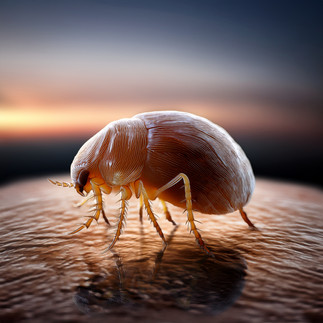Spring Safety Checklist for Pet Owners
- Christina Kilby
- 2 days ago
- 4 min read
Spring is here, and with it comes sunny days, blooming flowers, and plenty of chances to spend time outdoors with your pets. While it’s fun to enjoy the season, it’s also important to make sure your furry friends stay safe. Animals rely on us to protect them. By following a few simple tips, you can help your pets enjoy a safe and happy spring with you.
Here’s your spring safety checklist to keep your pets healthy this season!
1. Keep Pets Cool and Comfortable
As the weather warms up, it’s easy for pets to overheat, especially cats and dogs. Unlike humans, pets don’t sweat like we do. They cool off by panting or through their paws, which isn’t very efficient on hot days.
How you can help:
Always give your pets cool, clean water to drink, especially if they’ve been outside.
Never leave your pet in a parked car, even for a few minutes. The temperature inside can skyrocket quickly and become dangerous.
Make sure there’s plenty of shade if your pet is spending time outdoors.
For example, if you and your dog are playing fetch at the park, take breaks under a tree so they don’t get too hot.
2. Watch Out for Toxic Spring Plants
Spring flowers are beautiful, but unfortunately, some of them can be dangerous to pets. For example, lilies are very harmful to cats, and plants like tulips and daffodils can cause problems for both dogs and cats if they eat them.
If you live in Southern California, there are a few specific plants to keep an eye on, such as oleander, sago palm, and foxglove.
Oleander is a common landscaping plant with pretty pink or white flowers. However, it’s highly poisonous to pets if they chew on it. Even a small amount can cause heart problems, vomiting, or worse.
Sago palm, often used in gardens, is especially dangerous. The entire plant is harmful, but the seeds are the most toxic. If eaten, it can lead to serious liver damage and even death.
Foxglove is another beautiful plant that’s toxic. If pets nibble on its flowers or leaves, it can interfere with their heart function and make them very sick.
How you can help:
Learn which plants are toxic, so you know what to avoid in your yard or on walks.
Keep pets away from gardens or flower beds where problematic plants might grow.
Consider planting pet-safe flowers, like sunflowers, snapdragons, or roses, in your yard.
If your pet eats something suspicious, call the ASPCA Animal Poison Control Center right away at (888) 426-4435. A quick call could save their life!
3. Stay Safe During Outdoor Adventures
Warm weather means perfect days for hiking, camping, or just taking long walks with your dog. These activities are great exercise and can help you and your pet bond, but they come with some risks too.
How you can help:
Use a secure leash and collar when hiking or walking. This will keep your pet from running off or getting lost.
Make sure your pet has a microchip or ID tag with your updated contact information.
Keep an eye out for hazards like sharp rocks, poisonous plants, or wild animals.
Bring supplies just for your pet, like water, a collapsible bowl, and food or treats.
Take breaks often and let your pet rest when needed. Just like humans, animals can get tired and dehydrated from physical activity.
Always clean up after your pet and dispose of waste properly. This helps keep the environment clean for everyone to enjoy.
4. Prevent Pesky Parasites
Springtime in Southern California means fleas, ticks, and mosquitoes are back in full force. These pests not only make pets uncomfortable but can also carry dangerous diseases.
Fleas can cause itching, skin infections, and even transmit tapeworms. Since they thrive in warm and dry conditions like those found in Southern California, regular flea prevention is key.
Use vet-recommended flea treatments or preventatives.
Wash your pet’s bedding often and vacuum your home regularly to keep fleas from spreading.
Ticks are another common threat, especially during hiking or outdoor adventures. Ticks in Southern California can carry Lyme disease, which can make pets very sick with symptoms like fever, lameness, and loss of appetite.
Check your pet for ticks after spending time outdoors. Be sure to look carefully around their ears, belly, and between their toes.
If you find a tick, remove it carefully and monitor your pet for any unusual symptoms.
Mosquitoes love Southern California’s warm weather and are the primary way heartworm disease spreads among pets. Heartworms are dangerous parasites that live in the heart and lungs, and they can be deadly if not treated.
Ask your veterinarian about heartworm prevention medication, which is crucial if you live in an area with mosquitoes.
Remove standing water from your yard, like in birdbaths or plant pots, where mosquitoes can breed.
Protecting your pet from these pests helps them stay happy and healthy all season!
Enjoy Spring Safely Together
Spending time with your pets in the fresh air is one of the best things about spring. By following this checklist, you can make sure your furry friends stay safe and healthy, allowing you to run, play, and explore together worry-free. They count on you to take care of them, so making a few small changes can make a big difference.
Thank you for being an amazing pet parent and doing your part to keep your pets safe. Here’s to a fun and paw-some spring!




















Comments